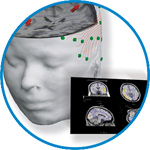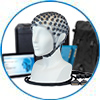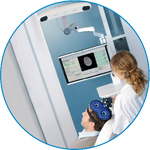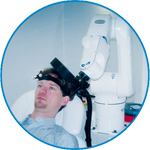- Home
- About ANT
-
Products

asa
asa is a highly flexible EEG/ERP and MEG analysis package with a variety of source reconstruction, signal analysis and MRI processing features.
.jpg)
eego mylab
The new frontier in multimodal brain research. With up to 16 kHz sampling rate, 256 EEG channels and unique software features, eego mylab gives you an unprecedented in-depth understanding of the human brain.

eego sports
eego sports offers complete freedom to collect high-density EEG data, bipolar EMG signals, and a variety of physiological sensor data, wherever and whenever required, with publish quality data in less than 15 minutes!

waveguard net
The waveguard net sets a new standard for research applications requiring high-density EEG data acquisition with quick preparation time, high flexibility, and subject comfort.

visor2
Our new and upgraded visor2 solutions integrate all the latest technologies for navigated rTMS, dual-coil navigation support, EEG-TMS recordings and pre-surgical evaluation for the highest quality in research and clinical procedures.

powerMAG ANT
The PowerMAG ANT 100 rTMS stimulator is designed for the specific needs of high-end TMS applications. Powerful high-frequency TMS as well as high precise single pulse and repetitive pulse protocols are combined in one single device.

xensor
xensor offers the solution for digitization of 3D electrode positions. xensor takes care of the whole procedure; it records, visualizes and stores positions acquired with a dedicated digitizer.

waveguard original
waveguard original is the cap solution for EEG measurements compatible with fMRI, MEG and TMS system. Use of active shielding guarantees performance in even the most demanding environments.

waveguard connect
waveguard connect EEG caps are a perfect match for hospitals and institutes aiming at reliable EEG, maximum uptime and great patient comfort! For optimal signal quality, the electrodes are made of pure, solid tin.

waveguard touch
waveguard touch is a dry electrode EEG cap. The unique Ag/AgCl coated soft polymer electrodes provide stable, research-grade EEG signals while maintaining subject comfort. The combination of these innovative dry electrodes and the industry-leading waveguard cap makes waveguard touch the best solution for dry EEG.

smartmove
smartmove allows planning of a complete TMS session ahead by defining stimulation sites based on anatomical MRI information and functional information like fMRI, PET or EEG/MEG.
Stay - References
- Support
- Events
- News
- Contact Us
You are here
Remote and long-term self-monitoring of electroencephalographic and noninvasive measurable variables at home in patients with epilepsy (EEG@HOME): Protocol for an observational study
Remote and long-term self-monitoring of electroencephalographic and noninvasive measurable variables at home in patients with epilepsy (EEG@HOME): Protocol for an observational study
Background
Epileptic seizures are spontaneous events that severely affect the lives of patients due to their recurrence and unpredictability. The integration of new wearable and mobile technologies to collect electroencephalographic (EEG) and extracerebral signals in a portable system might be the solution to prospectively identify times of seizure occurrence or propensity. The performances of several seizure detection devices have been assessed by validated studies, and patient perspectives on wearables have been explored to better match their needs. Despite this, there is a major gap in the literature on long-term, real-life acceptability and performance of mobile technology essential to managing chronic disorders such as epilepsy.
Objective
EEG@HOME is an observational, nonrandomized, noninterventional study that aims to develop a new feasible procedure that allows people with epilepsy to independently, continuously, and safely acquire noninvasive variables at home. The data collected will be analyzed to develop a general model to predict periods of increased seizure risk.
Methods
A total of 12 adults with a diagnosis of pharmaco-resistant epilepsy and at least 20 seizures per year will be recruited at King’s College Hospital, London. Participants will be asked to self-apply an easy and portable EEG recording system (ANT Neuro) to record scalp EEG at home twice daily. From each serial EEG recording, brain network ictogenicity (BNI), a new biomarker of the propensity of the brain to develop seizures, will be extracted. A noninvasive wrist-worn device (Fitbit Charge 3; Fitbit Inc) will be used to collect non-EEG biosignals (heart rate, sleep quality index, and steps), and a smartphone app (Seer app; Seer Medical) will be used to collect data related to seizure occurrence, medication taken, sleep quality, stress, and mood. All data will be collected continuously for 6 months. Standardized questionnaires (the Post-Study System Usability Questionnaire and System Usability Scale) will be completed to assess the acceptability and feasibility of the procedure. BNI, continuous wrist-worn sensor biosignals, and electronic survey data will be correlated with seizure occurrence as reported in the diary to investigate their potential values as biomarkers of seizure risk.
Results
The EEG@HOME project received funding from Epilepsy Research UK in 2018 and was approved by the Bromley Research Ethics Committee in March 2020. The first participants were enrolled in October 2020, and we expect to publish the first results by the end of 2022.
Conclusions
With the EEG@HOME study, we aim to take advantage of new advances in remote monitoring technology, including self-applied EEG, to investigate the feasibility of long-term disease self-monitoring. Further, we hope our study will bring new insights into noninvasively collected personalized risk factors of seizure occurrence and seizure propensity that may help to mitigate one of the most difficult aspects of refractory epilepsy: the unpredictability of seizure occurrence.

 Read more
Read more.jpg)




